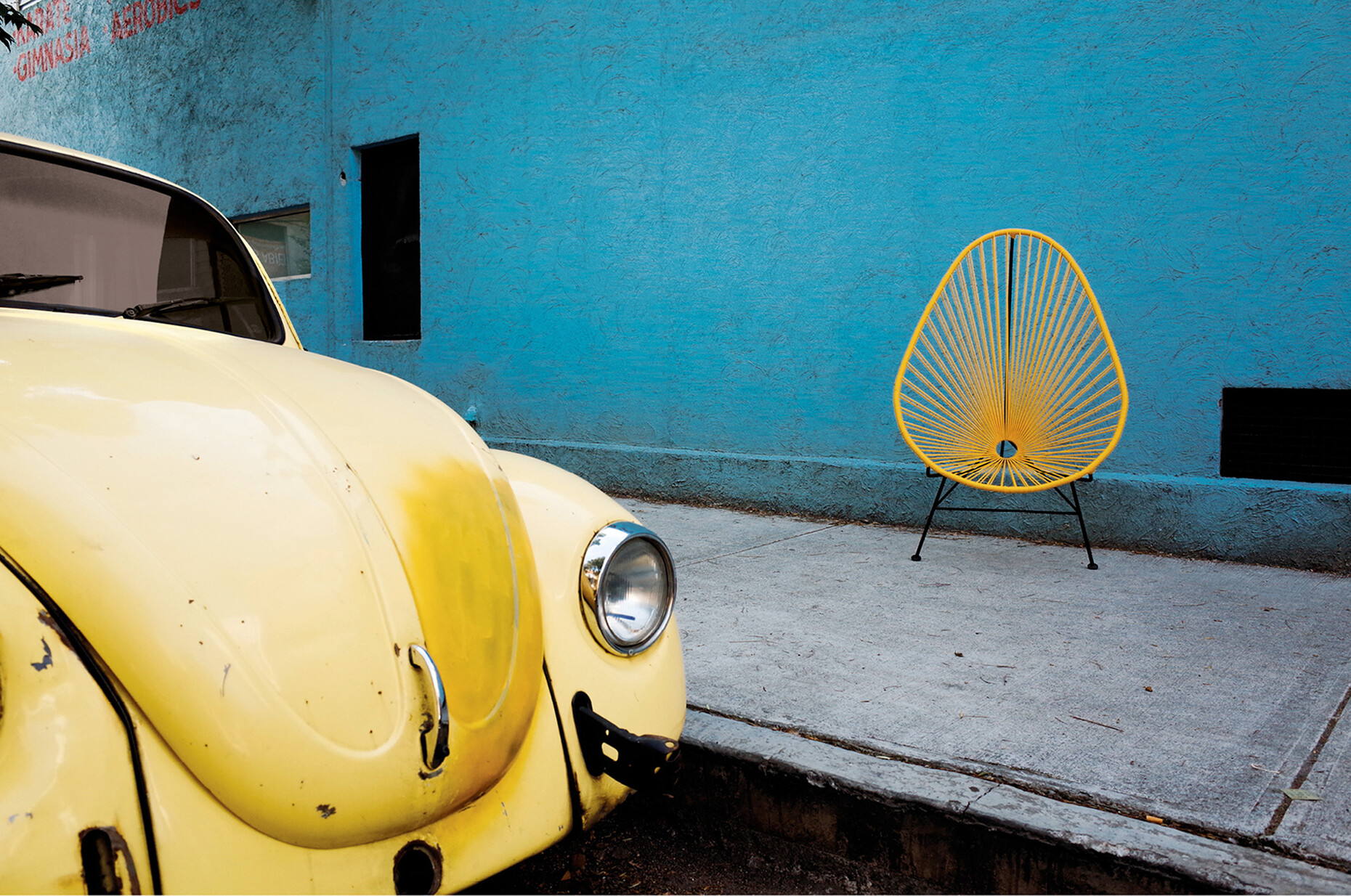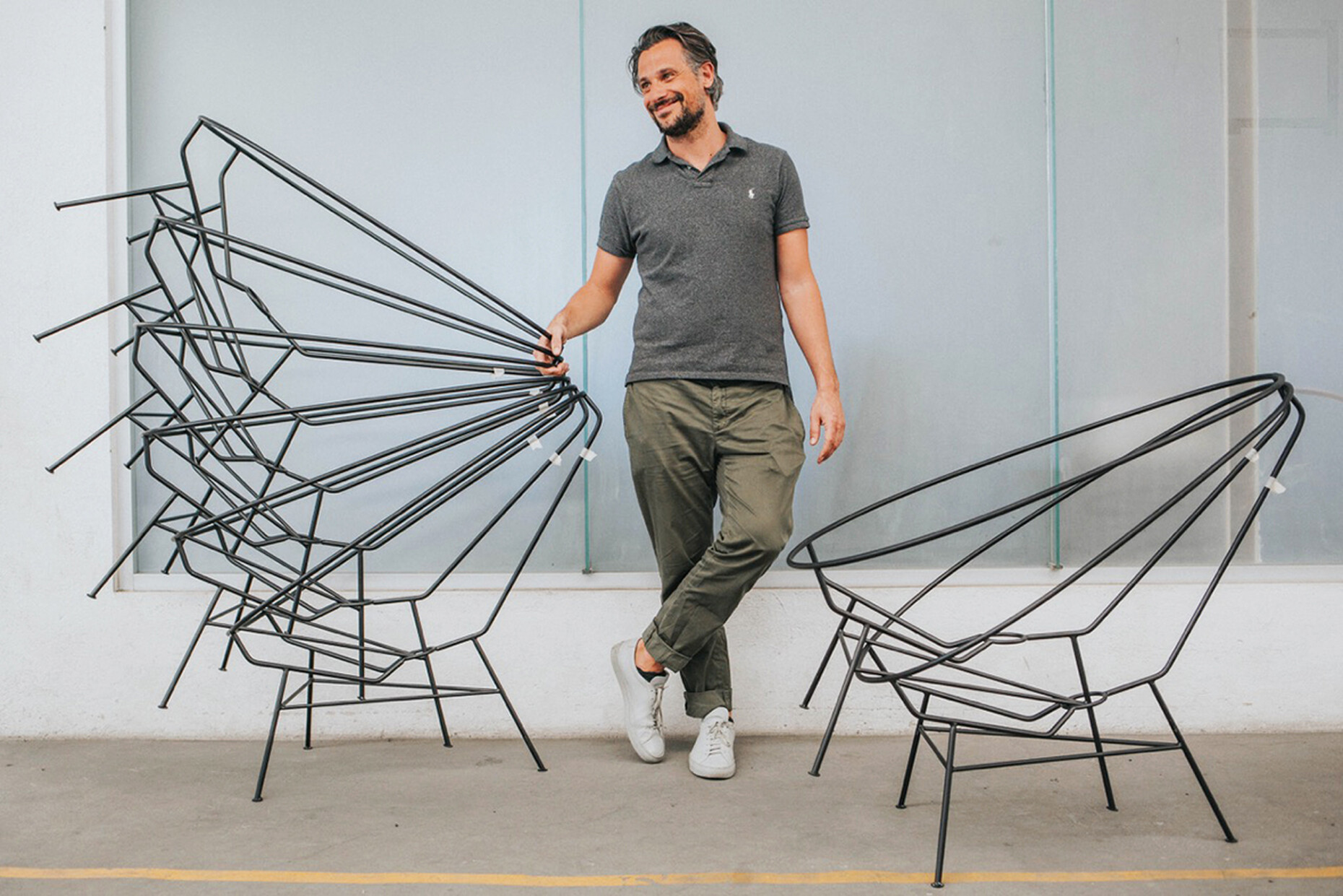The jet-set goes indoors
No-one really knows how and where the Acapulco Chair was invented. There are numerous myths surrounding the origins of the popular outdoor chair with its metal frame and corded seat. The favorite story of Benjamin Caja, founder of Acapulco Design, revolves around a baker who once transported his bread in baskets made of plastic cord. One day he had the idea that the strung cord would no doubt also make a marvelous seat – and the rest is legend. In the 1950s and 1960s, the Mexican resort of Acapulco on the Pacific coast was the place-to-be for anyone who was anyone in the international jet set. Rock-and-roll legend Elvis Presley and Italian film diva Sophia Loren are just two of the famous guests who sat sipping exquisite cocktails in Acapulco Chairs. To this day the chair has lost nothing of the glamour of this period. Yet since then the enduring popularity of the design has unfortunately also washed numerous models onto the market whose quality and aesthetics fall far short of the mark. A small family-run company from Munich has been producing the “counter-model” since 2015: Benjamin Caja brings the handmade models to Germany directly from Mexico. “Mexico has a strong craft tradition and it is part of our philosophy to emphasize that,” he says.
In further developing the design, Caja sought to retain the basic concept of the famous midcentury classic. The handmade “Original Classic Acapulco Chair” has an incredibly light and elegant appearance. Low-cost manufacture in Asia was out of the question: “I don’t want to rob the chair of its soul and history. The producer I work with in Mexico has been making these chairs for generations. There is a tangible sense of the experience and the love of the product,” he notes. Impressed by the unusual design of the chair, Benjamin Caja decided to create a material version, with leather used for the seat. “With its aesthetics and its comfort the Acapulco Chair was always more than just garden furniture for me,” says Caja. He has developed an entire product line based on the original design of the Acapulco Chair, expanding the previous range of colors and materials and adding monochrome models with a synchronous frame and seat. Sitting in the Rocking Chair, you can dreamily contemplate the dazzling world of Old Hollywood gently swaying to and fro, instead of on three or four legs. For a sense of calm at the dining table, Caja together with Munich design agency HANSANDFRANZ developed the cantilever AD-1 Dining Chair with sled-base frame. Moreover, the stool “Acapulco Design Hocker” brings a breath of fresh air to any chair ensemble.
With a view to the sustainability of his products, Caja always uses elastic plastic that is free from phthalates and heavy metals and is UV resistant. He likewise considers fair working conditions at the manufacturing facility and respect for the crafts trades important. “Authenticity plays a crucial role in our success story. We don’t want to grow too fast and always want to maintain the overview of which products are in our range,” he says in summary. Benjamin Caja is to premiere the four-legged version of the cantilever chair, the AD-4, at the upcoming international consumer goods trade fair Ambiente in Frankfurt/Main.
Acapulco Design at Ambiente in Frankfurt/Main:
February 8-12, 2019, Hall 8, Stand E13









































